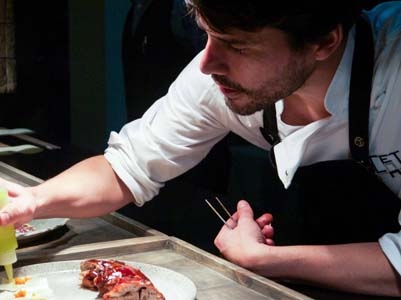The Foodish Boy Goes To Peru
I'll start with a confession: I often spend more time deciding where to go for dinner than enjoying the meal itself. Unlike my parents' generation, whose decision in 1970s England was simply whether to have steak or gammon at the Berni Inn, the wealth of dining options today are as diverse as the people offering opinions on them. Time Out, Zagat, Urbanspoon, TripAdvisor, Top Table, Chowhound...? By the time I've waded through such guides in search of mid- to low-range French bistros, I've probably changed my mind altogether and decided I'd rather have Lebanese.
My arrival in Peru coincided with a launch of yet another guide, Latin America's Top 50 Restaurants. As with the above guides, I am a real sucker for these kind of lists — especially when I can state with pride that my home for the week, Virgilio Martínez's Central, appears at number four. "The list," as it is known in Peru, is especially significant for a number of reasons. Firstly, its birth is illustrative of the emerging fine dining revolution sweeping across Latin America. Secondly, unlike Europe, the United States, and Japan, Latin America does not use Michelin stars. Finally, as one local told me, Peru does not have many cultural icons, and so the listed chefs are the closest the country has to the Beckhams and Gagas of the world. Perhaps this explains why I saw Virgilio in the street every morning before I had even arrived at the kitchen.
Peru, the "land of abundance," boasts an incredibly rich diversity of climates, geography, and ecosystems. For Central, this means an opportunity to showcase a variety of unusual ingredients at the heart of the creative culinary process. Their tasting menu pays tribute to pacha mama ("Mother Nature" in Quechua) by taking diners on a journey across Peru. From the sea to the water of the lower Andes, the menu progresses through the red jungle and into the Andean mountain range and forest. One need only to step into Virgilio's office to realize here is a chef-cum-explorer — there must have been 100 different salts alone. Even with the aid of Google Translate I was still flummoxed by some of the ingredients I saw in the kitchen.
Take for example the first course, tom de mar ("snapshot of the sea"). This dish serves up an unusual take on the national dish ceviche. Raw scallops rolled in kanihua, a cereal typical of the Andes similar to quinoa. The ceviche's leche de tigre (the marinade known as tiger milk) contains tumbo, a banana passion fruit that beautifully complements the sweetness of the fresh scallops. The last twist of this dish is given by borage, a flower that alarmingly tastes like oysters. If you're fascinated reading of these ingredients, imagine tasting them (it looks pretty kickass, too)!

Another curiosity was Virgilio's use of frozen potato — not exactly something you would expect to see on a fine dining menu (cue flashbacks to lumpy mash served for school dinners). However, this particular "frozen potato" was the chuño, a frost-resistant potato grown at high altitudes, which is repeatedly frozen at night and thawed in the daytime sun. In case this wasn't interesting enough, Virgilio tops the mash with cushuro, a round algae that grows on lakes at altitudes of 4,000 meters. Finally, the dish was completed with mullaca root and taperiba (OK, I'm sorry, I haven't got a clue what these two are).
With so many fascinating ingredients around, you can forgive me for not going into detail about my role at Central. I can assure you it wasn't all that fascinating. With the ongoing Mistura food festival and the Top 50 awards, half the world's food critics were in town and they weren't going to let a gringo like me slow the pace of progress. My job...? Peeling the hearts of palm into spaghetti-like strands. For four days. Nonstop. By the time the week ended, I never wanted to see a palm heart again. Nonetheless, I was quite content to stand, peel, observe, and taste the many fascinating dishes Virgilio, his wife Pia, and the rest of the team sent out of their beautiful open kitchen.
On my last night Virgilio and Pia brought the chefs together for a toast to a week that had seen the restaurant internationally recognized as one of the best in Latin America. I felt incredibly privileged to share this moment with them, and witness some of the hard work and dedication that went into achieving this. Their food is unique; nowhere else in the world can you experience food like this. Next time you're in Lima, do yourself a favor... Don't waste any time, put down those guide books, and head straight to Central.